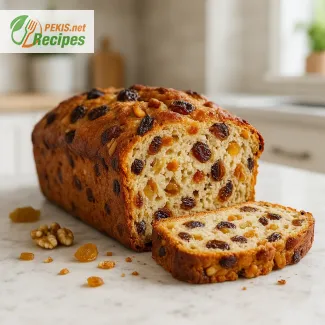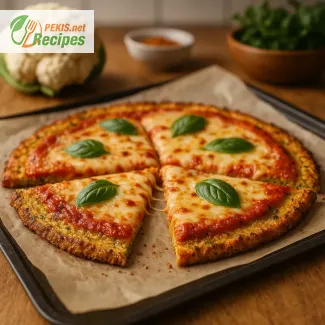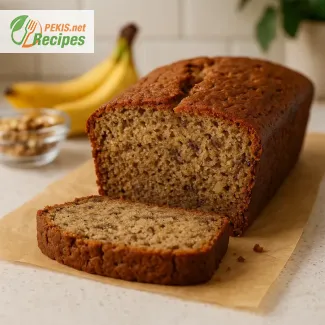
The viral soft bread that melts in your mouth
Discover the magic behind homemade cloud bread from TikTok
Few food trends have taken the internet by storm quite like cloud bread — that ethereal, fluffy bread that looks like a pastel-colored cloud and feels like biting into a marshmallow. Originally a low-carb bread alternative, this mesmerizing creation has gained massive popularity on TikTok, with millions of users trying out their own versions. What started as a keto-friendly hack quickly turned into a full-blown viral sensation, especially thanks to its playful colors and air-light texture. Whether you’re drawn to its visual appeal or curious about its unique feel, this cloud bread recipe invites you into the world of homemade magic where baking becomes both a culinary and creative experience.
Unlike traditional bread, cloud bread contains no flour, yeast, or oil. Instead, it relies on a simple trio of ingredients — egg whites, a small amount of sugar, and cornstarch — whipped together until light and fluffy, then baked into soft, weightless rounds. The result? A bread that's less about structure and more about sensation: smooth on the outside, tender and spongy inside, and delicately sweet.
Cloud bread is not just a trend — it’s an experience. Its melt-in-the-mouth texture, combined with its pillowy volume, makes it feel like eating a soft meringue or sweet soufflé. For those who are exploring fun baking ideas, want a low-carb bread replacement, or simply love a whimsical project, cloud bread is the perfect recipe to try.
What makes cloud bread so special?
Aesthetic delight meets simple ingredients
There’s something magical about the way cloud bread puffs up in the oven, transforming from whipped egg foam into a tall, puffed-up dome that resembles a dream-like cloud. It's the kind of transformation that sparks curiosity and excitement, especially when you take the time to add a swirl of food coloring — pastel pinks, baby blues, or minty greens — turning it into an edible sculpture that looks like it's straight out of a fairytale.
Its texture is unlike any other bread. It’s soft, bouncy, and light as air, offering a unique tactile experience that’s hard to describe unless you’ve tasted it. Unlike chewy sourdough or crusty baguettes, cloud bread has no real crumb. Instead, it’s soft throughout, with a slightly chewy outer layer that peels apart like cotton candy.
The recipe is ideal for anyone looking to make bread without flour or for those following gluten-free or low-carb lifestyles. And since it’s naturally flourless and yeast-free, it also appeals to home bakers who want something easy, quick, and a little magical.
The origin and rise of TikTok cloud bread
From keto forums to viral fame
Before it went viral, cloud bread was known in keto communities as an easy bread substitute — sometimes called “Oopsie bread.” It’s been around for years, but TikTok gave it a new life. With the added flair of pastel coloring and soft music montages, creators began showcasing their fluffy bakes, tearing them apart to reveal the airy insides, releasing little puffs of steam, and delighting viewers around the globe.
The simplicity of the recipe made it instantly accessible. With just a few ingredients and no special equipment needed beyond a mixing bowl and oven, people of all baking levels could jump in. For younger audiences or those just getting into baking, cloud bread became the gateway to experimenting in the kitchen, especially during lockdowns, when easy and satisfying projects were in high demand.
Cloud bread’s success lies not just in its look but in its playful, joyful spirit. It’s not trying to replace traditional bread; it’s meant to delight, to surprise, to entertain — and that’s exactly what it does.
The texture, flavor, and customization
What to expect when you bite into cloud bread
If you’ve never tried cloud bread before, prepare for a gentle surprise. The first bite is like air — light, barely there — with just a hint of sweetness. It doesn’t have the structure or chew of a standard bread roll, but instead collapses slightly when bitten, like a soft foam or meringue. Some say it resembles a marshmallow with a crisper shell, while others compare it to a soufflé that holds its shape.
Because of its minimal ingredients, cloud bread has a very subtle taste, making it a perfect canvas for additional flavors. You can add vanilla extract, a drop of almond essence, or even cocoa powder for a chocolatey twist. Some home bakers incorporate natural fruit powders or matcha for vibrant color and taste.
Its look is equally adaptable — a few drops of gel food coloring swirled in just before baking create beautiful pastel gradients or bold swirls. You can bake them as one large round, or make multiple smaller portions for individual servings. Either way, the process is rewarding and the result is irresistibly photogenic.
Why it’s perfect for beginners and creative bakers
No kneading, no rising, no waiting
For those who love the idea of baking bread at home but find traditional recipes intimidating, cloud bread is the perfect place to start. There’s no yeast to proof, no dough to knead, and no hours of waiting for a rise. It’s a quick, satisfying bake that delivers maximum visual and tactile reward with minimal effort.
The simplicity of the method also means it’s a fantastic recipe to make with kids. Whipping the egg whites into glossy peaks is fun to watch, and kids love the visual transformation from bowl to baked dome. Plus, the ability to customize with color, shape, and flavor means that no two cloud breads need to look the same.
Even seasoned bakers enjoy cloud bread as a playful break from precision-heavy techniques. Its casual, creative spirit makes it a favorite for those looking to unwind in the kitchen and rediscover the joy of baking for fun.
The playful art of presentation
Make it pop with colors, toppings, and shapes
Half the fun of cloud bread is in how you present it. While the classic version is baked in a soft dome shape and left plain, there are endless ways to make your version stand out. Add a dash of pastel colors for a dreamy aesthetic, or use vibrant shades for a cosmic galaxy look.
Some bakers top their cloud bread with sprinkles, edible glitter, or powdered sugar. Others go for a rustic feel and keep it natural, letting the golden finish speak for itself. You can even shape it into hearts, stars, or mini domes to serve at brunches or birthday parties.
Whether you're creating it for your own enjoyment or preparing a sweet surprise for someone special, cloud bread is as much about creativity as it is about baking. It invites you to play with your food — in the best possible way.
- Preheat the oven to 150°C (300°F) and line a baking tray with parchment paper.
- Separate the eggs carefully. Place the egg whites in a clean, grease-free bowl. Ensure there is no yolk mixed in, as this will prevent proper whipping.
- Start whipping the egg whites using an electric mixer on medium speed. Once they become foamy, gradually add in the sugar while continuing to beat.
- Add the cornstarch and keep whipping until stiff peaks form — the mixture should be glossy and hold its shape firmly.
- If using vanilla extract or food coloring, gently fold it into the mixture with a spatula, being careful not to deflate the whipped peaks.
- Scoop the mixture onto the lined tray, forming 3 rounded mounds. Use the back of a spoon to shape them into smooth domes.
- Bake in the preheated oven for 25 minutes, until the exterior feels set and slightly crisp to the touch.
- Allow the cloud breads to cool for 10 minutes before serving. They will be light, airy, and slightly sweet — best enjoyed fresh.
Creative variations to elevate your cloud bread
How simple tweaks can transform your fluffy TikTok cloud bread into something even more special
Cloud bread is already a visual and textural wonder, but its minimal ingredient list leaves room for plenty of creative enhancements. Whether you’re aiming for a richer flavor, a healthier version, or a more resilient texture, small changes can significantly elevate this whimsical treat. By understanding how ingredients interact and how certain techniques affect the final outcome, you can customize cloud bread to suit your preferences — while still enjoying its signature fluffiness.
Common mistakes to avoid when baking cloud bread
Even though the recipe looks easy at first glance, there are a few key mistakes that can lead to flat, soggy, or unpleasantly eggy cloud bread. The most frequent issue is under-whipping the egg whites. Achieving stiff peaks is essential for that cloud-like structure. If the peaks are too soft or the mixture is runny, it won’t hold its shape in the oven and will collapse after baking.
Another frequent pitfall is introducing fat into the egg whites—this can come from even a small trace of yolk or oil on utensils or bowls. Egg whites will not whip properly in the presence of fat, so make sure everything is squeaky clean and dry.
Overbaking can result in a too-crispy or browned crust, which ruins the soft, pillowy aesthetic. On the flip side, underbaking leaves the inside too moist and sticky. Stick to the right temperature and time: 150°C (300°F) for 25 minutes is ideal.
Flavor-enhancing ingredients to try
Though traditional cloud bread contains only egg whites, sugar, and cornstarch, adding flavorings or mix-ins can take the experience to the next level without compromising texture. Here are some great options:
- Vanilla extract (5 ml / 1 tsp): Adds warmth and familiarity, balancing the eggy taste.
- Almond extract (2.5 ml / ½ tsp): A subtle nutty note that elevates the overall aroma.
- Cocoa powder (10 g / 2 tbsp): Adds depth and turns it into a light chocolate cloud bread. Use unsweetened cocoa for best results.
- Matcha powder (5 g / 1 tbsp): Infuses the bread with a mild bitterness and earthy flavor, while giving a beautiful green hue.
- Coconut sugar (30 g / 2 tbsp): A lower-glycemic alternative to white sugar that adds a caramel undertone.
- Cinnamon or cardamom (1 g / ¼ tsp): Perfect for a spiced version, especially around the holidays.
These additions should be folded in gently after the egg whites are whipped to stiff peaks. Avoid mixing too vigorously, or the batter will deflate.
Natural coloring ideas for aesthetic appeal
The pastel swirl of cloud bread is one of its signature attractions. Instead of artificial dyes, consider using natural food colorings:
- Beetroot powder: For soft pink or magenta tones.
- Spirulina: A deep blue-green for an ocean-inspired look.
- Turmeric: A sunny yellow with added anti-inflammatory benefits.
- Blueberry or blackberry juice: Adds both color and a subtle fruity note.
Adding natural color not only makes the bread more visually stunning, but also gives it a health-conscious twist.
Healthier alternatives and dietary tweaks
For those seeking a more wholesome version of cloud bread, there are several health-focused substitutions you can explore:
- Aquafaba instead of egg whites: Perfect for a vegan version. Use the brine from canned chickpeas — about 120 ml (½ cup) to replace 4 egg whites. Whip until stiff peaks form, just like with eggs.
- Maple syrup or honey instead of sugar: Adds sweetness with extra minerals, though you’ll need to reduce the quantity slightly (use 15 ml / 1 tbsp).
- Arrowroot powder or tapioca starch instead of cornstarch: Great for those avoiding corn, and both yield similar results in terms of texture.
Keep in mind that each of these alternatives can slightly alter the structure or flavor of the cloud bread, but they can be worthwhile adjustments for specific dietary needs.
Why homemade cloud bread is superior
Homemade versions allow you to control every aspect of the recipe — from sweetness and flavor to ingredient quality and allergens. Store-bought or mass-produced versions often use stabilizers, preservatives, or artificial colors that you can avoid entirely when making cloud bread yourself.
Additionally, preparing cloud bread at home means it can be served fresh from the oven, when the texture and visual impact are at their best. Its softness, slight chew, and subtle sweetness shine brightest in the first few hours after baking.
Homemade baking also offers a valuable hands-on experience, perfect for involving kids or learning new kitchen skills like whipping egg whites or folding ingredients correctly.
Unique serving ideas and pairings
Cloud bread is often enjoyed on its own, but you can enhance its appeal by pairing it with thoughtful sides or toppings:
- Whipped cream and berries: A dessert-like presentation with added sweetness and texture.
- Nut butters: Almond or peanut butter provides protein and contrast to the bread’s lightness.
- Cream cheese with honey drizzle: A rich, tangy topping that complements the subtle flavor.
- Greek yogurt with cinnamon: Adds a protein-rich, creamy balance with warming spice.
Though not designed as sandwich bread, cloud bread can also be used as a fun base for creative, open-faced snacks. Just don’t expect it to hold up under heavy toppings.
How temperature and technique affect texture
Baking at the correct temperature is crucial. Too high, and the bread browns too fast on the outside without setting inside. Too low, and it won’t rise properly. If your oven tends to run hot or cold, investing in an oven thermometer is a wise idea.
The whipping process is where much of the magic happens. Whip your egg whites to firm, glossy peaks, not dry or crumbly ones. Use a hand or stand mixer on medium-high, and don’t rush the process. Once peaks form, stop mixing immediately to avoid overbeating.
Also, bake the bread as soon as the batter is shaped. Letting it sit too long before baking causes the mixture to deflate, leading to flatter, denser results.
Storage tips for best texture
Cloud bread is best enjoyed on the day it's made, but if you have leftovers, store them in an airtight container at room temperature for up to 1 day. To refresh the texture, a few seconds in the microwave can restore some of the fluff, though it won't be exactly the same as freshly baked.
Avoid refrigerating it, as that can make it rubbery. Freezing is not recommended, as thawing compromises the delicate structure.
What makes cloud bread truly special is its versatility and playfulness. It offers a blank canvas for creativity — in color, shape, flavor, and even nutrition. Whether you’re making it with kids, hosting brunch, or just enjoying a quiet afternoon project, the small tweaks and thoughtful adjustments you make can turn this simple recipe into a personal masterpiece.
Allergens present in the recipe:
- Eggs
Gluten: This recipe is naturally gluten-free.
Suggestions to replace allergens:
- For an egg allergy, replace egg whites with aquafaba (chickpea brine) — use 120 ml (½ cup) of aquafaba and whip as you would egg whites. Texture may vary slightly but will still achieve volume.
- Vitamin B2 (Riboflavin): 0.3 mg – supports energy production and cellular function
- Vitamin B12: 0.5 µg – essential for red blood cell formation and nervous system health
- Selenium: 10 µg – antioxidant support and immune function
- Phosphorus: 60 mg – supports healthy bones and teeth
- Potassium: 90 mg – regulates blood pressure and muscle function
- Selenium: 10 µg – combats oxidative stress and supports thyroid function
- Lutein and Zeaxanthin (trace): May be present in egg whites – beneficial for eye health and protection from blue light damage





